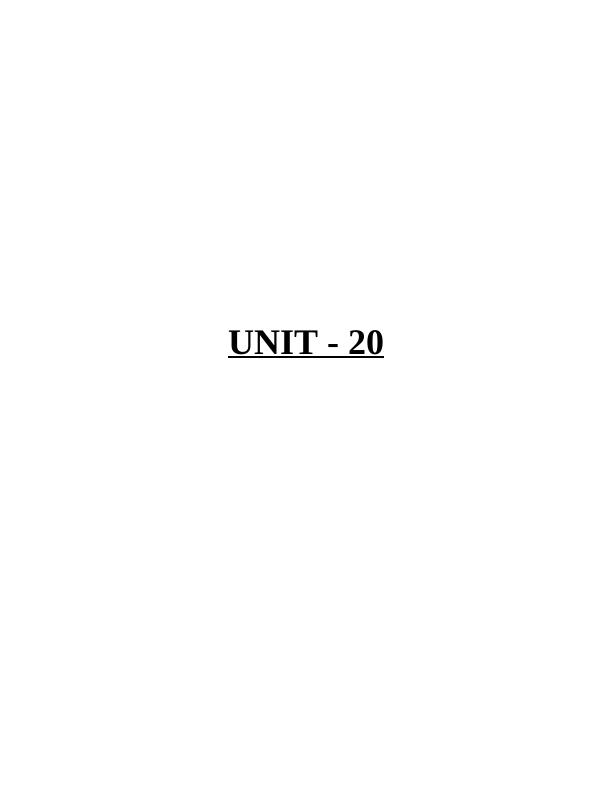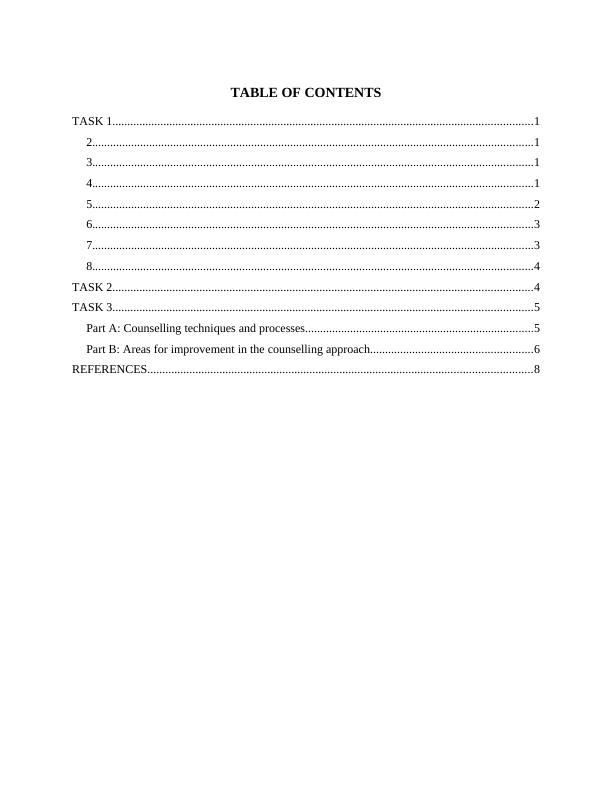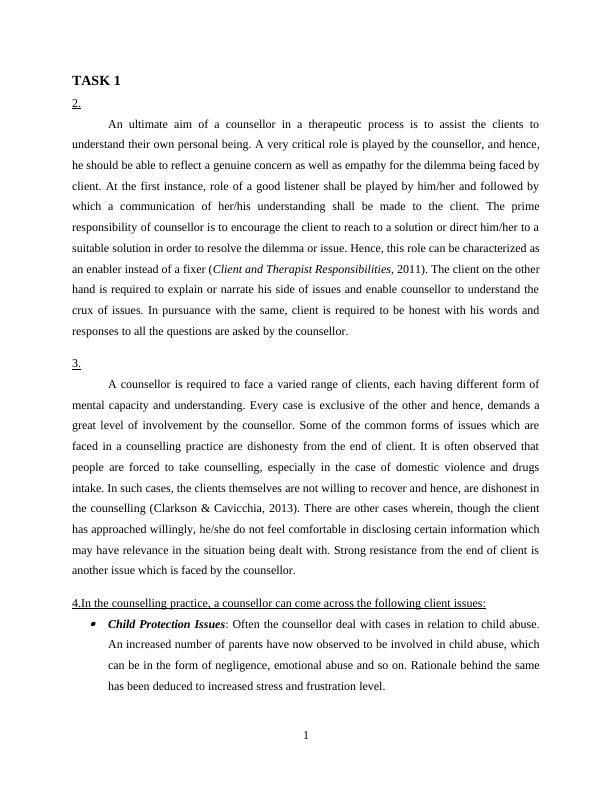Ask a question from expert
A UNIT OF CONTENTS 20 TABLE OF CONTENTS TASK 11 2. 1 3. 1 4. 1 5. 2 6. 3 7. 4 TASK 10 - 20 Part B: Areas for improvement in the counselling approach
10 Pages3350 Words410 Views
Added on 2019-12-17
About This Document
4 TASK 24 TASK 35 Part A: Counselling techniques and processes 5 Part B: Areas for improvement in the counselling approach 6 REFERENCES 8 TASK 1 1 2. In the counselling practice, a counsellor can come across the following client issues: Child Protection Issues: Often the counsellor deal with cases in relation to child abuse. 3.In the counselling practice, a counsellor can come across the following client issues: Child Protection Issues: Often the counsellor deal with cases in relation to child
A UNIT OF CONTENTS 20 TABLE OF CONTENTS TASK 11 2. 1 3. 1 4. 1 5. 2 6. 3 7. 4 TASK 10 - 20 Part B: Areas for improvement in the counselling approach
Added on 2019-12-17
BookmarkShareRelated Documents
End of preview
Want to access all the pages? Upload your documents or become a member.


